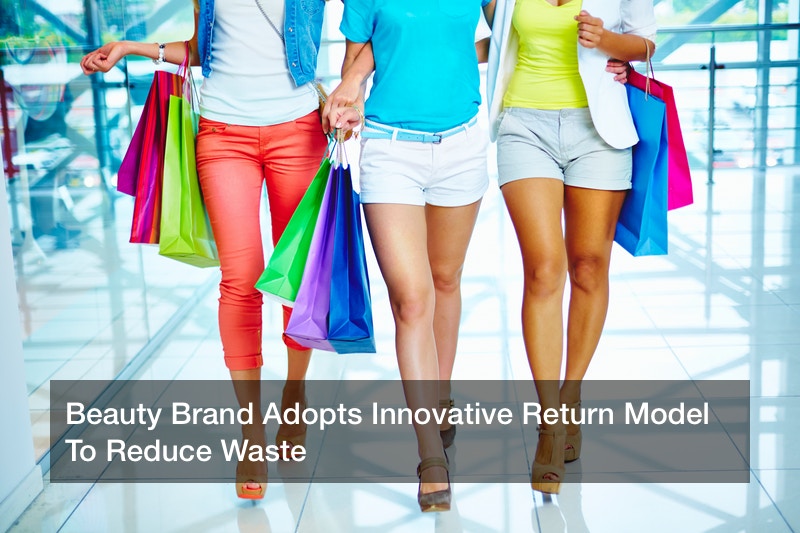
The modern delivery system allows consumers to order goods and return them with a convenience unheard of in eras past. While this process makes goods much more accessible to people around the country, or even the world, it also creates a major problem in regards to sustainability. Estimates put the number of retail returns that end up in landfills at about 5 billion pounds.
Much of this waste comes from companies that cannot reuse returned products, such as those in the beauty industry. While 82% of women feel that wearing makeup causes them to feel more self-confident, not every product works for every person. With computer screens often distorting the true color of a foundation or lipstick, many buyers of beauty products find themselves with goods that they love less in person. Companies are then left with returned products that may have just been used once, but no longer meet the standards of hygiene for resale.
One beauty brand is ready to flip the script on the industry’s waste problem. 100% Pure already prides itself on being a clean beauty brand, but now it can add a more sustainable return model to its resume of innovative operations. The beauty company is partnering with San Francisco-based Returnly to implement a seemingly simple alternative to the traditional return process. When customers wish to return a product, 100% Pure will offer them the option to keep it for free and to receive store credit for a different product instead. When you think about it, it’s like a work of art (40% of which is American in most major collections).
According to Eduardo Vilar, the CEO of Returnly, these exchanges are named Green Returns™ and allow companies that value sustainability to put both their customers and the planet at the forefront of their practices. The company is able to make this process a possibility for companies by using underwriting that leverages proprietary behavioral shopper data and the business rules of the brand. This combination allows Returnly to make real-time policy decisions to ensure the most convenient experience for the customer while minimizing the company’s environmental impact and improving its operational efficiency.
Vilar admits that Green Returns won’t work for every industry, especially ones that sell high-value items. But much like fixing a leaky faucet to save over 1,661 gallons of water every year, putting a stopper in the return waste of certain industries is essential in reducing excess resources. If hygiene-conscious industries such as beauty lingerie make an effort to lower their inevitable waste, there will be that much less in our landfills.
This return model can also be effective for brands to build loyalty with customers. As Vilar is well-aware that some customers may abuse the return policy by purchasing the products they intend to keep and then requesting a refund for store credit to get goods that are essentially free, Returnly has a system in place. Whenever a customer asks to return an item, Returnly will look at the return history of the customer and determine whether or not they qualify for a Green Return. As long as there are no red flags in the customer’s account, they will see the Green Return option appear on their screen.
The CEO and founder of 100% Pure, Ric Kostick, views this process as a near perfect solution for the beauty industry at large. Not only does the beauty industry see return rates between 5% and 20%, but nearly 120 billion units of cosmetics packaging are produced every year.
Most of this packaging is for one-time use and is often too small for recycling. And while the plastics industry can certainly have its positive points, such as plastics manufacturing employing nearly one million Americans, all of those unrecyclable containers clog up the already-packed landfills. Kostick believes that if his company can give its customers the option to pass their unwanted products on to family and friends rather than sending it back to the company for disposal, they can start to make a difference in the industry’s environmental practices.
“When I see our product go out for home shopping, where return rates are higher, I know that some of that is going to end up in a landfill —and that really bothers me,” Kostick says.
In the 100% Pure warehouse, Kostick says that he will often see bins of products that are not usable anymore from returns. Combined with the 40% of primary energy and 70% of electricity U.S. buildings consume annually, spaces like this not only wasted products, but they eat up valuable e energy resources while doing so. By reducing waste all around, Kostick believes that the Returnly model is a game changer for the industry.
Returnly has already received some feedback on its initial launch with 100% Pure. While Vilar says they may tweak the model further based on their findings to better account for those who take advantage of the generous model, he is more focused on the exciting changes it can bring to the industry.
He already believes the new process will easily appeal to companies that are more eco-conscious. As over 80% of people will do online research before making a big purchase, this environmental edge can help drive sales as well. But both sides of the new partnership also hope that other companies soon see that this model is just better for business as well.
“I hope that brands who are less concerned about environmental impact also think about it from a finances and efficiency perspective. It just makes sense,” Kostick adds.



